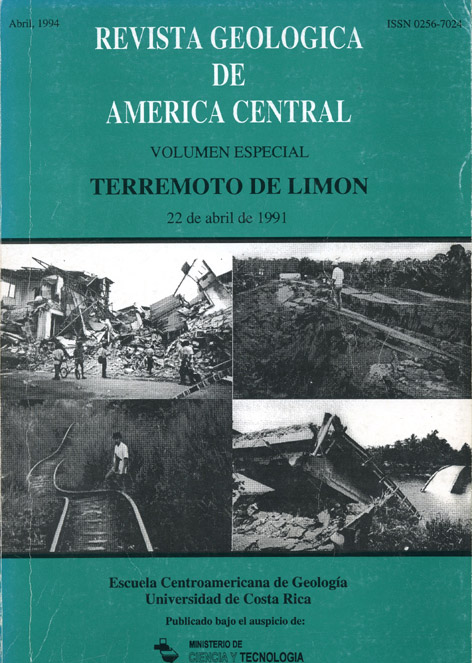Abstract
The South Limón Basin is an elongated sedimentary depression located in the back arc region, at the Caribbean side of Costa Rica. This basin has been subjected to several compressional tectonic phases through its geological history.
The first compressive tectonic phase is recorded by a series of East to West trending positive structures, as a result of northerly directed stresses that took place in the late Middle Eocene time. The second compressive fault assemblage is related to the subduction of Coco Plate underneath Caribbean Plate, resulting in a cluster of thrust faults as a continuation of the Panamá Deformed Belt. This last tectonic event initiated in the Upper Miocene and has been an active process until the present time.
The earthquake of April 22, is thought to be associated to Coco and Caribbean plates collision and to the transmission and liberation of energy along the major East - West trending strike slip fault system that runs through middle Costa Rica from coast to coast. In the Limón area this system joins with the South Limon Thrust Belt. This complex fault system segments Costa Rica into North and South crustal blocks. The South block has been clockwise rotated with respect to the Northern block.
The absence of seismicity in the outer part of the South Limón Thrust Belt, support the idea of aseimic lifting probably due to at the front, effect that seems to be an ongoing process since the Upper Miocene until the Present as it is shown in some seismic reflection examples.






